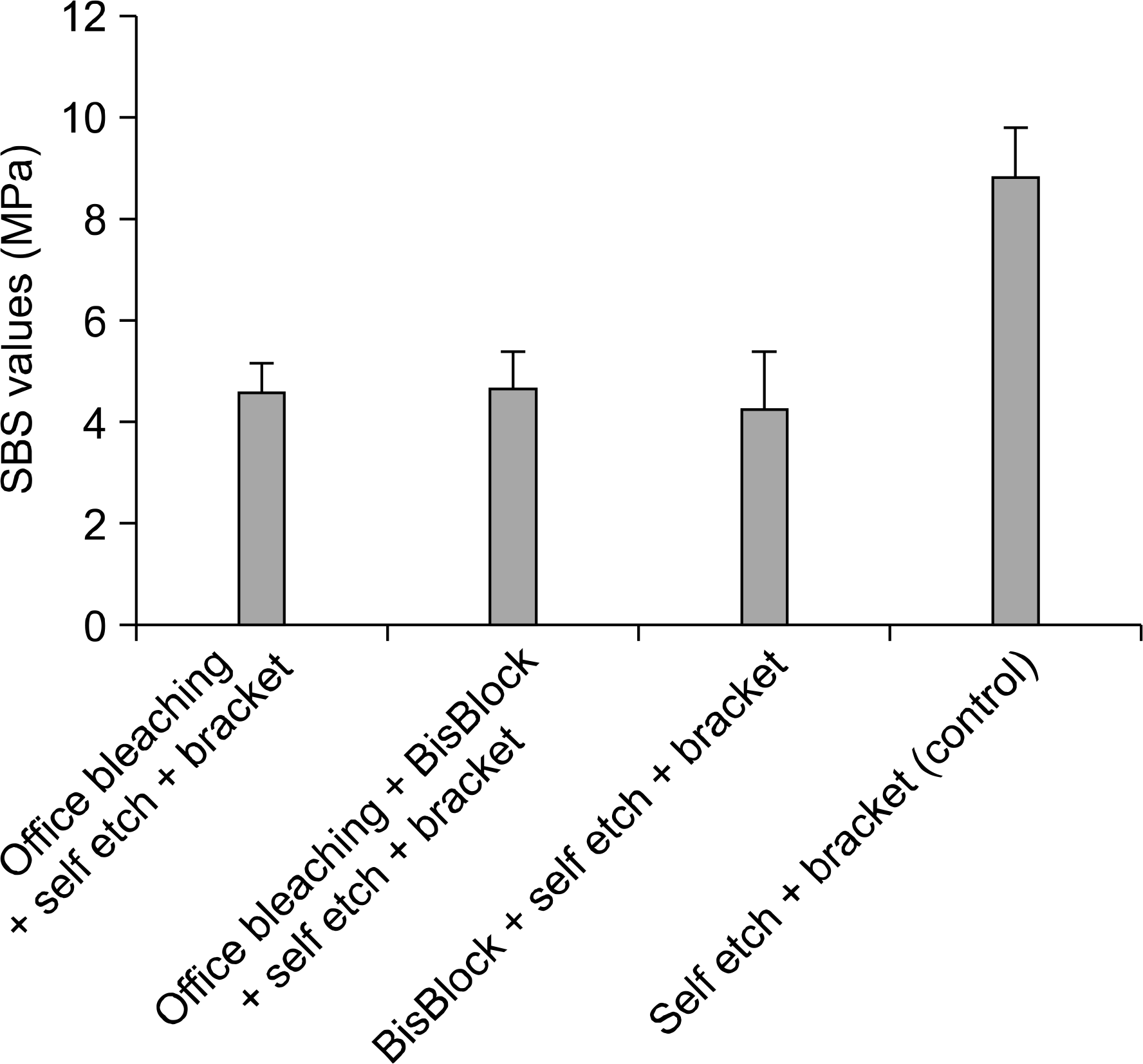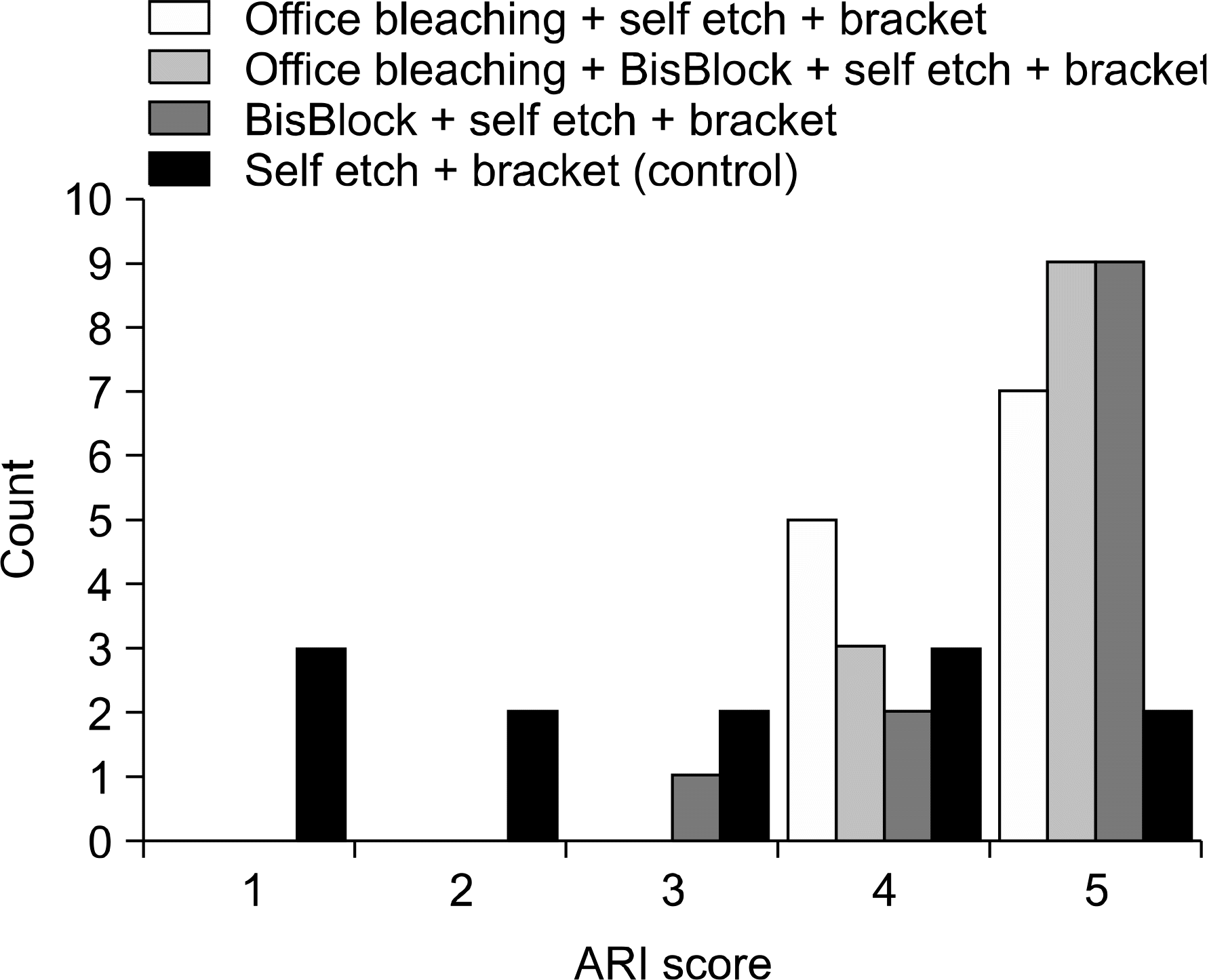1.Shinohara MS., Peris AR., Rodrigues JA., Pimenta LA., Ambro-sano GM. The effect of nonvital bleaching on the shear bond strength of composite resin using three adhesive systems. J Adhes Dent. 2004. 6:205–9.
2.Unlu N., Cobankara FK., Ozer F. Effect of elapsed time following bleaching on the shear bond strength of composite resin to enamel. J Biomed Mater Res B Appl Biomater. 2008. 84:363–8.

3.Marshall MV., Cancro LP., Fischman SL. Hydrogen peroxide: a review of its use in dentistry. J Periodontol. 1995. 66:786–96.

4.Leonard RH Jr., Austin SM., Haywood VB., Bentley CD. Change in pH of plaque and 10% carbamide peroxide solution during nightguard vital bleaching treatment. Quintessence Int. 1994. 25:819–23.
5.Josey AL., Meyers IA., Romaniuk K., Symons AL. The effect of a vital bleaching technique on enamel surface morphology and the bonding of composite resin to enamel. J Oral Rehabil. 1996. 23:244–50.

6.Gürgan S., Bolay S., Alaçam R. In vitro adherence of bacteria to bleached or unbleached enamel surfaces. J Oral Rehabil. 1997. 24:624–7.

7.Canay S., Cehreli MC. The effect of current bleaching agents on the color of light-polymerized composites in vitro. J Prosthet Dent. 2003. 89:474–8.

8.Crim GA. Post-operative bleaching: effect on microleakage. Am J Dent. 1992. 5:109–12.
9.Perdigão J., Francci C., Swift EJ Jr., Ambrose WW., Lopes M. Ultra-morphological study of the interaction of dental adhesives with carbamide peroxide-bleached enamel. Am J Dent. 1998. 11:291–301.
10.Holland GR., Narhi MN., Addy M., Gangarosa L., Orchardson R. Guidelines for the design and conduct of clinical trials on dentine hypersensitivity. J Clin Periodontol. 1997. 24:808–13.

11.Walters PA. Dentinal hypersensitivity: a review. J Contemp Dent Pract. 2005. 6:107–17.

12.Türkkahraman H., Adanir N. Effects of potassium nitrate and oxalate desensitizer agents on shear bond strengths of orthodontic brackets. Angle Orthod. 2007. 77:1096–100.

13.Watanabe I., Nakabayashi N., Pashley DH. Bonding to ground dentin by a phenyl-P self-etching primer. J Dent Res. 1994. 73:1212–20.
14.Frankenberger R., Perdigão J., Rosa BT., Lopes M. "No-bottle" vs "multi-bottle" dentin adhesives—a microtensile bond strength and morphological study. Dent Mater. 2001. 17:373–80.

15.Van Meerbeek B., De Munck J., Yoshida Y., Inoue S., Vargas M., Vijay P, et al. Buonocore memorial lecture. Adhesion to enamel and dentin: current status and future challenges. Oper Dent. 2003. 28:215–35.
16.Perdigão J., Geraldeli S., Hodges JS. Total-etch versus self-etch adhesive: effect on postoperative sensitivity. J Am Dent Assoc. 2003. 134:1621–9.
17.Attar N., Korkmaz Y. Effect of two light-emitting diode (LED) and one halogen curing light on the microleakage of Class V flowable composite restorations. J Contemp Dent Pract. 2007. 8:80–8.
18.Gokcelik A., Ozel Y., Ozel E., Arhun N., Attar N., Firatli S, et al. The influence of Er: YAG laser conditioning versus self-etching adhesives with acid etching on the shear bond strength of orthodontic brackets. Photomed Laser Surg. 2007. 25:508–12.
19.Miller RA. Laboratory and clinical evaluation of a self-etching primer. J Clin Orthod. 2001. 35:42–5.
20.Oliver RG. The effect of different methods of bracket removal on the amount of residual adhesive. Am J Orthod Dentofacial Orthop. 1988. 93:196–200.
21.Lai SC., Tay FR., Cheung GS., Mak YF., Carvalho RM., Wei SH, et al. Reversal of compromised bonding in bleached enamel. J Dent Res. 2002. 81:477–81.

22.Lai SC., Mak YF., Cheung GS., Osorio R., Toledano M., Carvalho RM, et al. Reversal of compromised bonding to oxidized etched dentin. J Dent Res. 2001. 80:1919–24.

23.Titley KC., Torneck CD., Smith DC., Adibfar A. Adhesion of composite resin to bleached and unbleached bovine enamel. J Dent Res. 1988. 67:1523–8.

24.Türkkahraman H., Adanir N., Güngör AY. Bleaching and desensitizer application effects on shear bond strengths of orthodontic brackets. Angle Orthod. 2007. 77:489–93.

25.Uysal T., Sisman A. Can previously bleached teeth be bonded safely using self-etching primer systems? Angle Orthod. 2008. 78:711–5.

26.Uysal T., Basciftci FA., Uşümez S., Sari Z., Buyukerkmen A. Can previously bleached teeth be bonded safely? Am J Orthod Dentofacial Orthop. 2003. 123:628–32.

27.Eminkahyagil N., Korkmaz Y., Gokalp S., Baseren M. Shear bond strength of orthodontic brackets with newly developed antibacterial self etch adhesive. Angle Orthod. 2005. 75:843–8.
28.Cavalli V., Reis AF., Giannini M., Ambrosano GM. The effect of elapsed time following bleaching on enamel bond strength of resin composite. Oper Dent. 2001. 26:597–602.
29.Sung EC., Chan SM., Mito R., Caputo AA. Effect of carbamide peroxide bleaching on the shear bond strength of composite to dental bonding agent enhanced enamel. J Prosthet Dent. 1999. 82:595–9.

30.Aranha AC., Siqueira Junior Ade S., Cavalcante LM., Pimenta LA., Marchi GM. Microtensile bond strengths of composite to dentin treated with desensitizer products. J Adhes Dent. 2006. 8:85–90.
31.Pashley DH. Dentin permeability, dentin sensitivity, and treatment through tubule occlusion. J Endod. 1986. 12:465–74.

32.Camps J., Pashley D. In vivo sensitivity of human root dentin to air blast and scratching. J Periodontol. 2003. 74:1589–94.

33.Gillam DG., Mordan NJ., Sinodinou AD., Tang JY., Knowles JC., Gibson IR. The effects of oxalate-containing products on the exposed dentine surface: an SEM investigation. J Oral Rehabil. 2001. 28:1037–44.

34.Gillam DG., Khan N., Mordan NJ., Barber PM. Scanning electron microscopy (SEM) investigation of selected desensitizing agents in the dentine disc model. Endod Dent Traumatol. 1999. 15:198–204.

35.Tay FR., Pashley DH., Mak YF., Carvalho RM., Lai SC., Suh BI. Integrating oxalate desensitizers with total-etch two-step adhesive. J Dent Res. 2003. 82:703–7.

36.Reynolds IR. A review of direct orthodontic bonding. Br J Orthod. 1975. 2:171–8.







 PDF
PDF ePub
ePub Citation
Citation Print
Print


 XML Download
XML Download